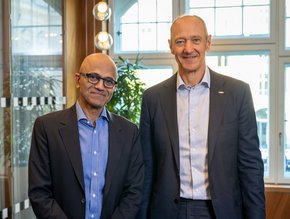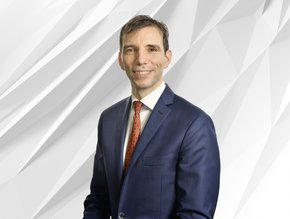Bain: Choose an open-source approach to ESG investing

With green technologies thriving and many companies emphasising fair trade supply chains or recycled ingredients, investments linked to environmental, social and governance (ESG) concerns would seem to have a boundless future. Investors are increasingly applying social responsibility strategies to manage risk, seek opportunities and generate returns beyond financial metrics.
Yet the growth of ESG stocks, bonds, mutual funds and other investments is running into limitations based on the flawed methods the financial industry sometimes uses to measure and rate such investments. Current approaches lack standard definitions and outcome measures for ESG initiatives, and still need to rely on opaque rating methodologies. As a result, they are hardly customisable and not scalable.
We propose a different approach, an 'open-source'-like taxonomy composed of individual ESG building blocks, which any wealth or asset manager could build and use. The chosen blocks will be powered by a combination of artificial intelligence (AI)-driven modeling and expert assessment. This allows wealth and asset managers to easily integrate ESG into the process of advising their clients.
What are the current limitations?
Several troubling characteristics are marring the current dynamics of socially responsible investing. To start, unlike generally accepted principles of accounting and financial disclosure in most public investing markets, there are still no generally accepted principles on ESG disclosure. Likewise, no standards exist among rating agencies.
For instance, rating agencies acquire data differently and use different statistical models to estimate unreported data. Some do not even publish the weightings they use to assess individual investments or sectors. Based on the different methodologies used by three popular rating agencies we sampled, their ESG ratings of Stoxx Europe 50 companies vary greatly (see Figure 1 below).
The correlation of ESG ratings among top ESG rating agencies averages 0.61, compared with 0.99 for credit ratings by the most relevant agencies. For the governance factor, it is as low as 0.30.

Moreover, agency ratings are slow to reflect advances in research, as they are updated relatively infrequently. In addition, their approaches usually only allow investors to avoid adverse investments but fail to produce certain outcomes with a thematic impact, or to report the effect of strategies customers selected.
Given the shortcomings of established ESG ratings, major asset management firms and banks, such as LGT and Pictet, have made the business decision to develop their own ESG assessment. They often rely heavily on pools of ESG experts. Technology firms, meanwhile, have entered the field armed with models that crunch massive amounts of data to generate insights. Many such models focus on statistical correlation rather than showing causality between a metric and the actual ESG performance of a given company.
As a result, retail investors currently have to settle for investment products that are too general and often do not align with an investor’s values and preferences. Investors cannot independently measure and verify how companies are progressing toward their sustainability goals. They are forced to buy sausage without knowing the mix and sources of ingredients.
This predicament risks having sustainability efforts treated as a marketing term that some companies will use to appease investors and consumers, a kind of greenwashing that devalues the hard work of organizations taking ESG seriously.
Choose your ESG building blocks
An alternative, open approach would allow customised ESG advice and reporting at a scale that makes it attractive to financial services firms. We propose building a replicable taxonomy by structuring the ESG universe into 50 to 100 building blocks (see Figure 2 below).

Each building block provides information on a particular, measurable E, S or G outcome. For example, hazardous waste or packaging material in E, child labor or diversity and inclusion in S, and fraud prevention or unfair value chain practices in G. In some cases, such as hazardous waste, the desired outcome will be directly measurable. In other cases, like fraud prevention, only input factors or conditions that lead to a particular outcome will be measurable. In order to compare companies’ ESG performance and their level of improvement, there needs to be a causality model that translates the measurable input factors into the desired outcome.
Consider one building block, carbon dioxide (CO2) reduction. It could start with a model like the one the Massachusetts Institute of Technology (MIT) produced, which establishes a chain of causality for CO2 emissions. Next, an artificial intelligence (AI) engine could be used to sort data from corporate annual and quarterly reports, other company publications, news feeds, online keyword searches and social media sentiment analysis. A pool of ESG experts would then review the output from the MIT model and the AI engine to remove dubious data and make sure the conclusions show causality, not just correlation. This combination of AI and human expertise strengthens the intelligence behind the building block.
The modular nature of this taxonomy enables wealth and asset managers to be flexible in how they advise customers. Here’s how it can be integrated into the advisory process:
- Initial assessment A wealth manager would explain the building blocks to a customer and determine the customer’s ESG preferences in rank order, along with his or her financial return and risk expectations.
- Portfolio recommendation. The wealth manager lays out specific investment opportunities that match the customer’s needs and expectations as much as possible.
- Reporting. Customised reporting would cover alignment with individual ESG objectives, a confidence level based on the quality and density of the data, and financial performance of the portfolio.
Success with this transparent, scalable approach will hinge on the quality of the interplay among the wealth or asset manager, the technology partner and ESG experts. Done right, the contribution of each participant will combine expert judgment with the powerful data-processing capabilities of AI technologies – liberating ESG investing from its current constraints.






